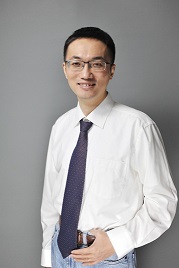Application of Deep Learning Techniques in Computational Electromagnetics
In recent years, research in deep learning techniques has attracted much attention. With the help of big data technology, massively parallel computing, and fast optimization algorithms, deep learning has dramatically improved the performance of many problems in speech and image research. In electromagnetic engineering, physical laws provide the theoretical foundation for research and development. With the development of deep learning, improving learning capacity may allow machines to “learn” from a large amount of physics data and “master” the physical law in certain controlled boundary conditions. In the long run, combining fundamental physical principles with “knowledge” from big data could unleash numerous engineering applications limited by a lack of data information and computation ability.
In this short tutorial, the presenter will share some of his learnings in deep learning techniques and discuss the potential and feasibility of applying deep learning in computational electromagnetics. The presenter hopes to explore the characteristics, feasibility, and challenges of deep learning methods in the field of computational electromagnetics through some examples, such as solving wave equations, array antenna synthesis, inverse scattering, etc.
Date and Time
Location
Hosts
Registration
-
 Add Event to Calendar
Add Event to Calendar
Loading virtual attendance info...
- Contact Event Hosts
- Co-sponsored by STARaCom Montreal
Speakers
 Prof. Maokun Li
Prof. Maokun Li
Application of Deep Learning Techniques in Computational Electromagnetics
Biography:
Maokun Li is currently an associate professor in the Department of Electronic Engineering at Tsinghua University, a senior member of IEEE, and a fellow of the Applied Computational Electromagnetic Society. He received his B.S. degree in electronic engineering from Tsinghua University, Beijing, China, in 2002 and his M.S. and Ph.D. in electrical engineering from the University of Illinois at Urbana-Champaign in 2004 and 2007, respectively. After graduation, He joined Schlumberger-Doll Research as a research scientist. In 2014, he joined the department of electronic engineering at Tsinghua University. His research interests include fast algorithms in computational electromagnetics and electromagnetic inverse problems with applications to subsurface imaging. He has co-authored two book chapters, over 90 journal papers, and 150 conference proceedings. They have been cited more than 5000 times. He is an associate editor of IEEE Transactions on Antennas and Propagation and IEEE Transactions on Geoscience and Remote Sensing. He is also a member of the AP-S membership and benefits committee and serves as the IEEE AP-S Distinguished Lecturer (2023-2025). He received the 2017 IEEE Ulrich L. Rohde Innovative Conference Paper Award, the 2019 PIERS Young Scientist Award, and the 2021 Instructor Award for Excellent Ph.D. Thesis by China Education Society of Electronics.
Address:China

